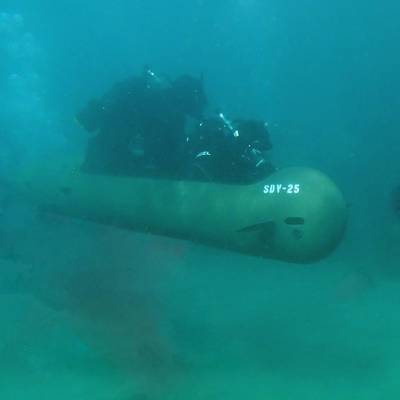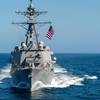Navies to Address Maritime Skill Decline
However reintegration of capabilities is presenting new challenges in the design, manufacture and integration of sub-sea and surface systems for maritime Special Forces.
James Fisher Defencehas stated that navies around the world are now seriously addressing the need to re-develop their skills in the use of maritime warfare, specifically in relation to maritime Special Forces and strategies for operations and intelligence gathering. This is leading to new challenges in how sub-sea and surface systems are designed, manufactured and integrated.
JFD, which is exhibiting its new range of Swimmer Delivery Vehicles (SDVs) at the Undersea Defence Technology conference in Liverpool, UK, believe there are a number of reasons for this changing dynamic. This includes the increasing reliance on good and accurate intelligence to enable successful missions despite reduced defence budgets; the fast-paced nature of today’s threats and the need to launch intelligence operations at very short notice. As well as this, there is still a continued need for human intelligence gathering to complement the progression in satellite and overhead surveillance innovation.
Ben Sharples, Director, James Fisher Defence, said: “In recent years there has been a shift to land-based conflicts, such as Afghanistan, as well as the war against terror. However, we are now seeing a significant change as navies look to reintegrate and develop their maritime Special Forces skills. In particular, in today’s environment, threats happen quickly, which demands a rapid response in the gathering of accurate intelligence. In addition to this, with navies wanting to keep their physical assets as far away from conflict as possible, we are seeing a focus on surface and sub-surface delivery, which is leading to the development and integration of advanced swimmer delivery vehicles onto suitable submarines and other platforms.”
However this change also presents challenges from a design, manufacture, implementation and training perspective. For example, it is critical to be able to get combat divers successfully through Lock in/Lock out (LiLo) systems. And with divers needing to operate at shallow depths to avoid decompression issues, the design of sub-sea systems is also being tested in terms of delivery capability and the rapid configuration that is required to suit a specific mission.
Sharples continued: “What we’re finding is that it is critical to be able to deliver a scalable solution that facilitates the inclusion of existing legacy systems, as well as allowing room for the development of new and emerging technologies and next generation systems. And importantly, there must be a phased integration, in conjunction with advanced training, so that systems can be increased in their sophistication as skill sets develop.”
JFD recently launched a new range of SDVs called The SEAL Pod; surface or sub-sea craft, which can be optimised for a particular deployment method or mission profile and can be provided in a number of configurations:
• SEAL Carrier; surface and subsurface vehicle operating at speeds greater than 30 kts delivered by surface ship or air-drop.
• Sub SEAL; six-man submersibles delivered via an attachment to the casing of a submarine
• Torpedo SEAL; a two-man chariot delivered within a standard submarine torpedo tube









